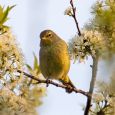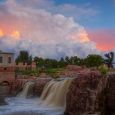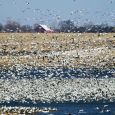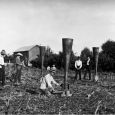Third Sunday Archeology: 'A Tale of Two Seasons' - Sioux Falls
Feb 19, 2017 2:00 pm
February's installment of Augustana's Third Sunday Archeology Program will feature speaker Dr. Leland Bement, on the topic “A Tale of Two Seasons: Late Paleoindian Subsistence Practices in the Oklahoma Panhandle."
Dr. Bement’s presentation will focus on subsistence strategies of Late Paleoindian populations in the southern Plains of North America. Late Paleoindian inhabitants on the southern Plains of the Oklahoma panhandle have always been depicted as specialized bison hunters. The large unfluted lanceolate points conjure a formidable image fitting a scenario of hunting bison; the largest mammal on the Plains since the demise of the mammoth. Recent excavation at the Bull Creek camp site (34BV176) opens the door to understanding what Late Paleoindian cuisine was really like. A summertime occupation is compared to a wintertime occupation; and a bison kill site is thrown in for good measure.
About Dr. Leland Bement
Dr. Bement holds the position of archeologist and research faculty with the Oklahoma Archeological Survey at the University of Oklahoma, Norman. He earned a Ph.D. in anthropology from the University of Texas at Austin. He has more than 35 years of experience in the prehistoric archeology of the southern plains of North America. He has worked extensively on Paleoindian and Archaic sites in Texas and Oklahoma and is published nationally and internationally. He is author of the books Hunter Gatherer Mortuary Practices During the Central Texas Archaic (2010) and Bison Hunting at Cooper Site (1999). His research interests include hunter-gatherers, Paleoindians, zooarchaeology, rock art, ritual, and social complexity of band level societies.
Bement is at the forefront of research on ancient butchering strategies. He is principal investigator of the 10,000-year-old Cooper Bison Kill, one of the best-preserved Folsom bison kills on the southern Plains. He is currently conducting investigations at two Late Paleoindian sites in the Oklahoma panhandle. The Ravenscroft site, a 9,000-year-old Bison antiquus kill bonebed, is an example of the arroyo trap hunting technique, resulting in the taking of dozens of animals at a time. The Bull Creek site is a deeply buried habitation site with animal processing areas, lithic reduction areas, and activity areas.
This program is funded in part by the David B. Jones Foundation, Augustana University’s Mellon Fund Committee, Augustana’s Archeology Laboratory and the Sioux Falls Chapter of the South Dakota Archaeological Society.
| Location: | Augustana University Froiland Science Complex 113A/B (formerly GSC 100) | |
| Map: | 33rd and Summit, Sioux Falls, South Dakota 57197 | |
| Phone: | 605-274-5320 | |
| Email: | tickets@augie.edu | |
| Website: | http://www.augie.edu/events/third-sunday-archeology-tale-two-seasons |
All Dates:
Feb 19, 2017 2:00 pm
You Might Also Like:
Submit your event
Do you know of an upcoming festival, performance, fundraiser, competition or centennial? Share it with others in our South Dakota Magazine online calendar.







